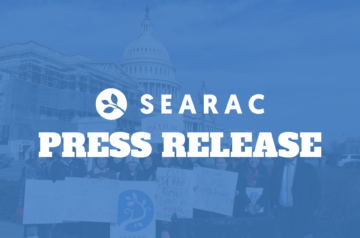WASHINGTON, DC — On May 28, President Biden released his proposed $6 trillion fiscal year 2022 budget, following his initial $1.5 trillion discretionary funding proposal in April. The proposal largely includes requests that were reflected in the American Jobs Plan and American Families Plan, and also includes funding requests for:
- The caregiving economy;
- Increased Pell grants;
- Free public community colleges;
- Asian American Native American and Pacific Islander Serving Institutions and other Minority Serving Institutions; and
- Extension of health insurance tax credits.
While these investments are wins for our communities, the budget proposal also requests $52 billion for the Department of Homeland Security, the same funding level as the previous fiscal year. The proposal outlines requests to address naturalization and asylum backlogs, support refugees, and expand alternatives to detention. It also includes requests to expand digital and biometric surveillance technology available to the agency, fund the agency’s ability to detain 32,500 immigrants daily, and continued expansion of a federal program allowing local law enforcement to act as federal immigration agents.
“Many components of the President’s budget proposal will help Southeast Asian Americans. This signals a shift in our country’s attitude towards providing support for vulnerable communities, and it indicates where our country must go to ensure our communities can thrive,” said Quyen Dinh, Executive Director of SEARAC. “However, while we appreciate President Biden’s efforts, we are deeply concerned that his level funding request for DHS will continue to promote the agency’s overzealous efforts to detain and deport our communities. We echo our partners at Defund Hate and urge Congress to significantly divest from Immigrations and Customs Enforcement (ICE) and Customs and Border Protection (CBP), and instead reinvest in resources for immigrant and refugee communities.”
SEARAC is also disappointed to note that the President’s budget proposal does not take bold steps to also make public universities debt free for students. More and more states have cut funding for higher education, driving the costs of tuition up for students, and the economic impacts of COVID-19 have further jeopardized state budgets. We need bold action from our leadership to ensure that students and families can invest in their futures without bearing an undue debt burden upon graduation.




